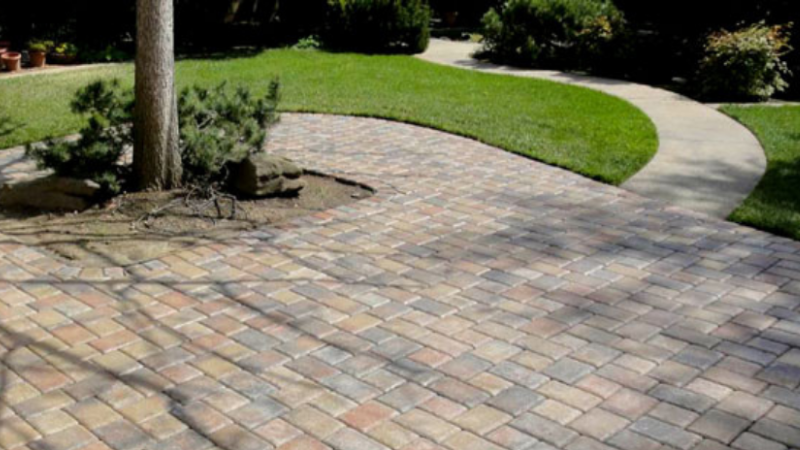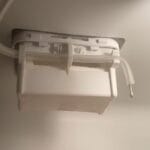Imagine transforming your outdoor space into a stunning haven that reflects your style and meets your needs. Choosing the right materials is crucial, and two popular options are flagstone and pavers.
But which is right for you? You might be wondering about the differences, the benefits, and the costs involved. Don’t worry; you’re not alone. Many homeowners face this decision, and understanding the pros and cons can make all the difference.
By the end of this article, you’ll have a clear picture of which option suits your dream design. Get ready to discover the secrets behind flagstone and pavers, as well as tips that could save you money and enhance the beauty of your landscape.
Material Characteristics
Flagstone offers a natural, rustic appearance with irregular shapes, adding unique charm to outdoor spaces. Pavers, on the other hand, provide uniformity and durability, ideal for creating sleek, modern designs. Both materials bring distinct characteristics to landscape projects.
Flagstone and pavers are popular choices for outdoor surfaces. Understanding their material characteristics helps make informed decisions. Each option offers unique features. Knowing these can enhance your landscaping project.Natural Stone Vs Manufactured
Flagstone is a natural stone. It comes directly from quarries. Its organic formation adds charm to outdoor spaces. Pavers, on the other hand, are manufactured. They are crafted from concrete or clay. Their production allows for uniform sizes and shapes. This consistency aids in precise installations.Durability And Longevity
Flagstone’s natural composition gives it strength. It withstands various weather conditions. Its durability spans decades. Pavers also boast significant resilience. They are designed for high traffic areas. Their longevity often rivals natural stone. Regular maintenance can extend their lifespan further.Color And Texture Variations
Flagstone offers varied colors and textures. Each piece is unique. This diversity adds visual interest to any setting. Pavers provide a wide range of options too. Manufacturers offer numerous colors. Textures can mimic natural stone or smooth finishes. This versatility aids in matching design preferences.Installation Process
Choosing between flagstone and pavers for your outdoor space can be quite the decision. The installation process is a crucial aspect to consider, as it affects both the look and longevity of your project. It’s not just about laying stones; it’s about creating a lasting impression. Let’s delve into the intricacies of installing these materials.
Complexity And Time
Flagstone offers a natural, uneven look that requires meticulous placement. You might find yourself spending extra time ensuring each piece fits just right. In contrast, pavers often come in uniform shapes, speeding up the laying process significantly. However, don’t let the ease of pavers fool you. Both methods demand attention to detail.
Reflect on this: Do you prefer spending more time to achieve a unique aesthetic, or do you want something quick and consistent? Your answer will guide your choice.
Tools And Equipment Needed
Setting up flagstone may require tools like a chisel and hammer to shape pieces and a rubber mallet for adjustment. It’s like crafting a puzzle where every piece is unique.
For pavers, you often need a tamper, level, and a saw for cutting. The process is more systematic but no less demanding. Don’t underestimate the power of having the right tools; they can make or break your project.
It’s essential to prepare a checklist of equipment before diving in. This ensures you’re not caught off guard halfway through your project.
Professional Vs Diy
Hiring a professional can save you the headache of potential mishaps. Professionals bring experience and efficiency, leaving you with a polished finish.
But if you’re a hands-on person, DIY might be your calling. I once spent a weekend with friends installing pavers. We learned, laughed, and created memories. The satisfaction of completing a project yourself is unparalleled.
Consider what matters most to you. Is it the experience or the expertise? Your priorities will shape your decision.
Whichever path you choose, remember that the installation process is more than just physical labor. It’s an opportunity to create a space that reflects your style and personality.
Cost Considerations
Choosing between flagstone and pavers involves understanding costs. Initial spending, ongoing maintenance, and long-term value play key roles. Each factor impacts your overall budget. Let’s explore these cost considerations in detail.
Initial Investment
Flagstone typically requires a higher initial investment. Natural stone comes with a premium cost. Pavers often offer a more budget-friendly choice. They are manufactured and readily available. Initial costs may vary based on materials and labor.
Maintenance Costs
Maintenance is essential to keep surfaces looking good. Flagstone may need sealing to prevent damage. It can be costly if not maintained well. Pavers require less frequent maintenance. Simple cleaning can extend their lifespan.
Long-term Value
Consider long-term value when deciding. Flagstone adds natural beauty and uniqueness. It can enhance your property’s appeal. Pavers offer durability and uniformity. They withstand harsh weather and heavy use.

Credit: www.mikesevergreen.com
Design Flexibility
When choosing between flagstone and pavers for your outdoor space, design flexibility plays a crucial role. Both materials offer unique opportunities to personalize your patio, walkway, or garden path. Understanding their customization options, patterns, layouts, and ability to blend with the landscape can help you make a more informed choice.
Customization Options
Flagstone and pavers both allow you to customize your space to reflect your style. Flagstone offers natural, irregular shapes that create a rustic, organic look. This can be particularly appealing if you love the idea of a more natural, less structured appearance.
Pavers, on the other hand, come in a variety of shapes, sizes, and colors. This means you can mix and match to create a unique design. Whether you want a minimalist modern look or something more intricate, pavers provide the flexibility to achieve it.
Patterns And Layouts
One of the joys of using flagstone is the freedom to create random, freeform patterns. The irregular shapes can be placed together like a puzzle, giving your space a distinct, handcrafted vibe. This approach can be particularly appealing if you enjoy a more organic design process.
Pavers offer more structured pattern options, such as herringbone, basket weave, or running bond. These patterns can enhance the visual appeal and add a sense of order to your outdoor area. You can even mix patterns in different sections to define spaces, like a dining area versus a lounging area.
Blending With Landscape
Flagstone’s earthy tones and natural textures make it an excellent choice for blending seamlessly with the surrounding landscape. Whether nestled among greenery or set against a water feature, flagstone complements nature effortlessly. It’s like your garden embraces the stone, making it part of the environment.
Pavers can also blend beautifully with your landscape, especially when you choose colors and textures that mimic natural elements. Consider using pavers that match or complement the hues of your home or garden. This approach can create a cohesive and harmonious look that ties your outdoor space together.
Have you ever considered how your choice of material can transform your backyard into a personal paradise? By understanding the design flexibility of flagstone and pavers, you’re better equipped to craft an outdoor retreat that truly reflects your taste and lifestyle.
Environmental Impact
Flagstone requires less energy to produce, reducing carbon footprint. Pavers often use concrete, impacting the environment more significantly. Choosing flagstone supports eco-friendly landscaping efforts.
When choosing between flagstone and pavers for your outdoor space, it’s essential to consider their environmental impact. The materials we use in landscaping can significantly affect the planet. By understanding the sustainability, eco-friendly options, and impact on local ecosystems, you can make a more informed decision.Sustainability
Flagstone is a natural stone, often sourced locally, reducing transportation emissions. Its durability means it lasts longer, which reduces the need for replacements and saves resources over time. Pavers, while manufactured, can be made from recycled materials, offering a sustainable alternative. Pavers’ modular design means you can replace just the damaged pieces instead of the entire area. This reduces waste and saves money. Consider the longevity and lifecycle of the material as part of your sustainable choice.Eco-friendly Options
Look for pavers made with permeable materials that allow water to seep through, reducing runoff and helping groundwater recharge. These options help manage rainwater sustainably and prevent flooding. Flagstone, though less permeable, can be installed with spaces between stones to allow water flow. Have you ever thought about using recycled concrete or rubber pavers? These materials repurpose waste and offer a unique aesthetic. Always check for eco-certifications when selecting materials to ensure they meet environmental standards.Impact On Local Ecosystems
Flagstone is natural, but its extraction can disrupt local habitats. Ensure the stone is sourced responsibly to minimize ecological damage. Pavers, depending on their material, can have varied impacts on the environment. Using local materials reduces the carbon footprint associated with transportation. Plus, integrating native plants between your paving stones can support local wildlife. How can your choices today protect the ecosystems around you tomorrow? By weighing these factors, you can create a beautiful, environmentally conscious outdoor space. Every choice has an impact—make yours count.
Credit: systempavers.com
Weather Resistance
Choosing the right material for your outdoor space depends on many factors. One of the most important is weather resistance. Both flagstone and pavers offer different strengths in withstanding various weather conditions. Understanding these differences can help in making the best choice for your needs.
Handling Extreme Temperatures
Flagstone is a natural stone, known for its durability. It can endure both hot and cold climates. This makes it a strong contender in areas with fluctuating temperatures. Pavers, made from concrete or brick, also handle temperature changes well. They are designed to expand and contract without cracking.
In intense heat, flagstone remains cooler to the touch. This is an advantage for bare feet in summer. Pavers may absorb more heat, which can make them warmer. For colder areas, pavers often perform better. They are less likely to crack from freezing.
Resistance To Moisture
Moisture can be a challenge for outdoor materials. Flagstone is naturally resistant to water. Its dense composition prevents water absorption. This helps in avoiding moss or algae growth. Pavers are also designed to resist moisture. Many are treated to repel water, reducing the risk of damage.
Flagstone surfaces are often uneven, allowing water to drain easily. Pavers, with their flat surfaces, may require proper installation to ensure drainage. Both options can perform well with proper care and maintenance.
Adapting To Seasonal Changes
Seasonal changes can affect outdoor materials over time. Flagstone adapts well due to its natural properties. It can handle changes in temperature and humidity with ease. Pavers are engineered to withstand seasonal shifts. Their joint design allows for movement without causing damage.
In places with distinct seasons, both materials prove effective. The choice often depends on personal preference and specific environmental needs. Maintaining these surfaces ensures they remain durable and attractive through the seasons.
Maintenance Requirements
Flagstone demands more attention to prevent weed growth between stones. Pavers require regular sealing to preserve their appearance. Both need occasional cleaning to maintain their charm and durability.
Choosing between flagstone and pavers for your outdoor project? Understanding the maintenance requirements can make your decision easier. Whether it’s a charming flagstone patio or a sleek paver driveway, each material demands different care. Let’s break down what you need to know to keep these surfaces in top condition.Cleaning And Upkeep
Regular cleaning is key to maintaining both flagstone and pavers. Flagstone, with its natural texture, can trap dirt and debris more easily. You might find yourself sweeping more often. On the other hand, pavers, especially those with smooth finishes, are easier to hose down. A simple rinse can work wonders. But, you might have to deal with stubborn moss or algae buildup in shady areas. I once spent an entire afternoon scrubbing moss off my flagstone walkway. It was a workout! But with pavers, a pressure washer did the job quickly. Have you ever spent hours cleaning and wished there was an easier way?Repair And Replacement
When it comes to repairs, flagstone can be tricky. If a stone cracks or chips, replacing it can be challenging due to its irregular shapes and sizes. You might need a professional to get a perfect match. Pavers are more forgiving. Their uniformity allows for straightforward replacement. You can often replace a single paver without affecting the surrounding area. Consider this: Would you prefer a material that’s easy to fix, or one that might require professional help for minor damages?Preventing Wear And Tear
Protecting your surfaces from wear and tear is crucial. Flagstone is naturally durable but can erode over time. Applying a sealant can help maintain its beauty. Pavers, however, are often pre-sealed, providing an extra layer of protection against the elements. Despite this, they can settle or shift, especially with heavy use. I learned this the hard way when a section of my paver driveway sank after a few too many delivery truck visits. Now, I keep an eye out for early signs of shifting. Are you prepared to handle the unexpected? Choosing between flagstone and pavers involves more than just aesthetics. Maintenance plays a significant role in the longevity and appearance of your outdoor spaces. Which material aligns best with your lifestyle and maintenance preferences?Aesthetic Appeal
Flagstone offers a natural, rustic charm with its irregular shapes and earthy tones. Pavers provide a more uniform and sleek look with a variety of colors and patterns. Both add unique aesthetic appeal to outdoor spaces, enhancing the overall design of gardens or walkways.
When choosing materials for your outdoor spaces, understanding the aesthetic appeal of flagstone versus pavers is key. These materials offer distinct looks that can transform your garden, patio, or walkway. Understanding their unique characteristics can help you make an informed decision that suits your style and complements your home.Timeless Beauty
Flagstone offers a natural, timeless beauty that many homeowners adore. Its irregular shapes and earthy colors give it a unique charm. Walking across a flagstone path in a friend’s garden, you might feel like you’re stepping back in time. Pavers, on the other hand, provide a more uniform look. Their consistent shapes and sizes create a clean, organized appearance. Imagine a courtyard with perfectly aligned pavers—it’s both elegant and modern.Modern Vs Rustic Look
Flagstone is synonymous with a rustic, organic look. If your home has a cottage or country style, flagstone fits right in. Its natural imperfections add character and warmth. Pavers can offer a modern vibe with their precise edges and smooth surfaces. They are available in various colors and patterns, allowing you to create contemporary designs. Think of a sleek, urban patio with geometric paver patterns—it’s chic and stylish.Enhancing Outdoor Spaces
Flagstone can turn a dull backyard into a charming retreat. Imagine a cozy seating area surrounded by lush greenery and a flagstone floor—it feels like your personal oasis. Pavers, with their versatility, can enhance outdoor spaces by offering endless design possibilities. From driveways to patios, they provide structure and form. Picture a welcoming pathway leading to your front door, laid with beautiful pavers—it’s inviting and neat. When considering these materials, think about how they align with your vision for your outdoor space. Will you choose the timeless allure of flagstone or the modern appeal of pavers? Your choice will shape the ambiance of your home’s exterior for years to come.Choosing The Right Option
Choosing between flagstone and pavers can be challenging. Both have unique qualities. Your choice will depend on various factors. Understanding these can help you make an informed decision.
Assessing Personal Needs
Consider the function of your outdoor space. Will it host large gatherings? Or is it a quiet retreat? Flagstone offers a natural look. Pavers provide uniformity and precision. Think about the climate too. Flagstone can be slippery when wet. Pavers often have better grip.
Aligning With Budget
Budget plays a crucial role. Flagstone is often pricier. Installation can be labor-intensive. Pavers are typically cheaper. They are easier to install. Factor in maintenance costs. Both need upkeep but vary in expenses.
Considering Lifestyle Preferences
Lifestyle influences choice significantly. Do you have children or pets? Pavers provide a stable surface. Flagstone offers a rustic charm. It suits gardens and natural settings. Your style preference matters too. Each option has distinct aesthetics. Choose what resonates with you.

Credit: www.threeseasonsllc.com
Frequently Asked Questions
What Are The Main Differences Between Flagstone And Pavers?
Flagstone is natural stone. Pavers are man-made. Flagstone offers irregular shapes. Pavers are uniform. Both have unique aesthetics.
Which Is More Durable, Flagstone Or Pavers?
Pavers are generally more durable. They withstand heavy traffic and weather well. Flagstone may crack over time.
Is Flagstone More Expensive Than Pavers?
Yes, flagstone is usually pricier. It requires more labor and precision. Pavers are more budget-friendly.
Can I Install Flagstone Myself, Or Do I Need A Professional?
Flagstone installation is challenging. It often requires a professional. Pavers are easier for DIY projects.
Which Option Is Better For Patios, Flagstone Or Pavers?
Pavers are ideal for patios. They offer a uniform look and durability. Flagstone provides a more rustic charm.
Conclusion
Choosing between flagstone and pavers depends on your needs. Flagstone offers natural beauty. It blends well with the environment. Pavers provide uniformity and durability. They are easy to install. Both options have their unique benefits. Consider your budget and style preference.
Also, think about maintenance and climate. Flagstone can be slippery when wet. Pavers can shift over time. Each choice adds value to your space. Make a decision that suits your lifestyle. Enjoy your new outdoor area!




